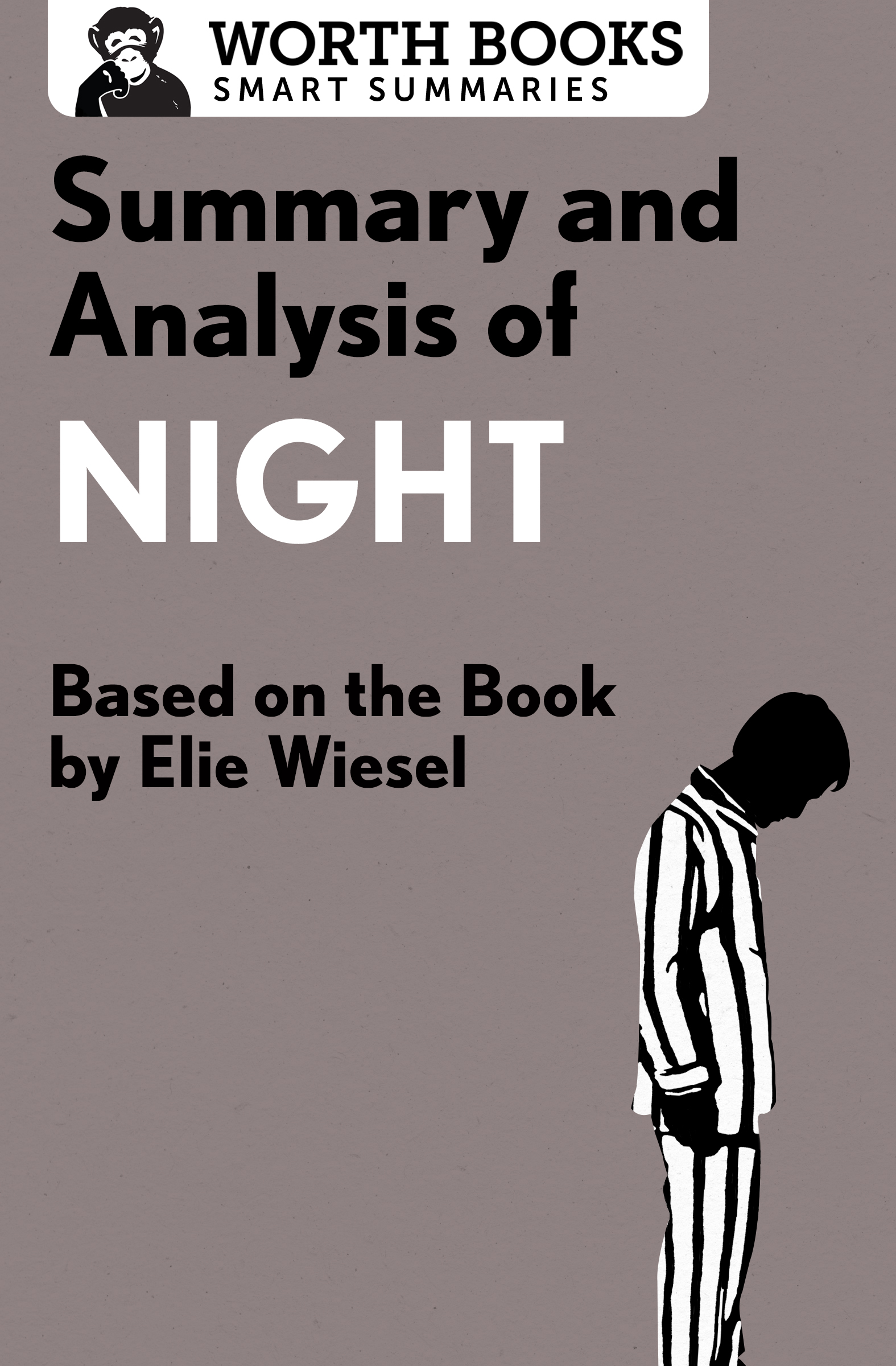

Summary and Analysis of
Night
Based on the Book by Elie Wiesel

Contents
Context
Overview
Summary
Timeline
Cast of Characters
Themes and Symbols
Direct Quotes and Analysis
Trivia
What’s That Word?
Critical Response
About Elie Wiesel
For Your Information
Bibliography
Copyright
Context
When Elie Wiesel wrote Night in 1956, it was rejected by multiple publishers because of the graphic account of the atrocities it describes. It was also assumed that there was no audience for Holocaust literature. While Anne Frank’s diary had been published to wide acclaim first in 1947—and then translated to English in 1952—the events recounted by Frank, horrible though they were, take place prior to her transport to a concentration camp, whereas Wiesel’s story takes place within the brutal confines of Auschwitz, Gleiwitz, and Buchenwald.
Wiesel was encouraged to write his story by the French novelist François Mauriac, author of the book’s foreword when it was ultimately published by Hill and Wang in 1960. The capture of SS lieutenant Adolf Eichmann that same year, and his subsequent trial, brought the magnitude of the historic events to a much broader segment of the American public and facilitated a greater understanding of—and interest in—the stories of survivors.
Early reviews for the book were mixed. One critic argued that it was an invaluable testimony, but a “failure as a work of art.” However, Night has since sold 10 million copies and spent more than 80 weeks on the New York Times bestseller list. It had a surge of popularity in the 1980s after Wiesel won the Nobel Peace Prize, and again in 2006 after it was selected for the Oprah Winfrey Book Club.
It continues to be the definitive eyewitness account of the sheer inhumanity of the Holocaust, and a popular inclusion in high school and college curricula. Like Anne Frank’s diary, Night is a useful vehicle for connecting young people to the history of the Holocaust because Wiesel was a teenager when Nazis transported he and his family to the camps. And though he wrote Night many years later, he faithfully delivers his thoughts and emotions exactly as they had occurred, even when they cause him shame.
Holocaust literature has become a full-fledged genre in its own right, with a plethora of fiction and nonfiction texts published in the decades since the original release of Night, as humanity still upholds the notion that we will “never forget.”
Overview
Elie Wiesel’s Night is one of the most well known testimonials from a Holocaust survivor in all of literature. At the beginning of the memoir, Elie is twelve years old, a devoutly religious Jew in the Transylvania town of Sighet. At age 15, German troops arrive—it’s the spring of 1944, and the Jews are forced to wear yellow stars on their clothing and are relocated to ghettos. Shortly thereafter, they are rounded up for “transport” and packed into crowded cattle cars with standing room only and inhumane conditions.
The captive Jews arrive at Auschwitz, the concentration camp in Poland. Elie cannot believe what he is experiencing; the stench of the crematorium is heavy in the air and he witnesses guards throwing children into a burning trench. Elie and his father are separated from his mother and sisters. The Jews are forced into labor, denied adequate food and rest, and beaten mercilessly.
The Wiesels work in an electronics factory overseen by sadists. When the Russian army nears Auschwitz, the prisoners are evacuated on a seemingly endless death march to another camp. Elie and his father manage to keep each other alive as their fellow captives die in droves: shot by Nazi guards or frozen to death in the snow.
The Russian army continues to press on, and the Jews finally arrive in a third camp, Buchenwald. Elie’s father has been stricken with dysentery. As he lies in bed calling out his son’s name, an SS guard arrives and issues a beating that kills him.
Elie must come to terms with a feeling of relief, no longer having to look out for them both. Allied forces liberate Buchenwald in April of 1945, but when Elie looks in the mirror for the first time after his ordeal, he sees a corpse. He has become a shell of a human being, robbed of his family, his community, and his faith in God.